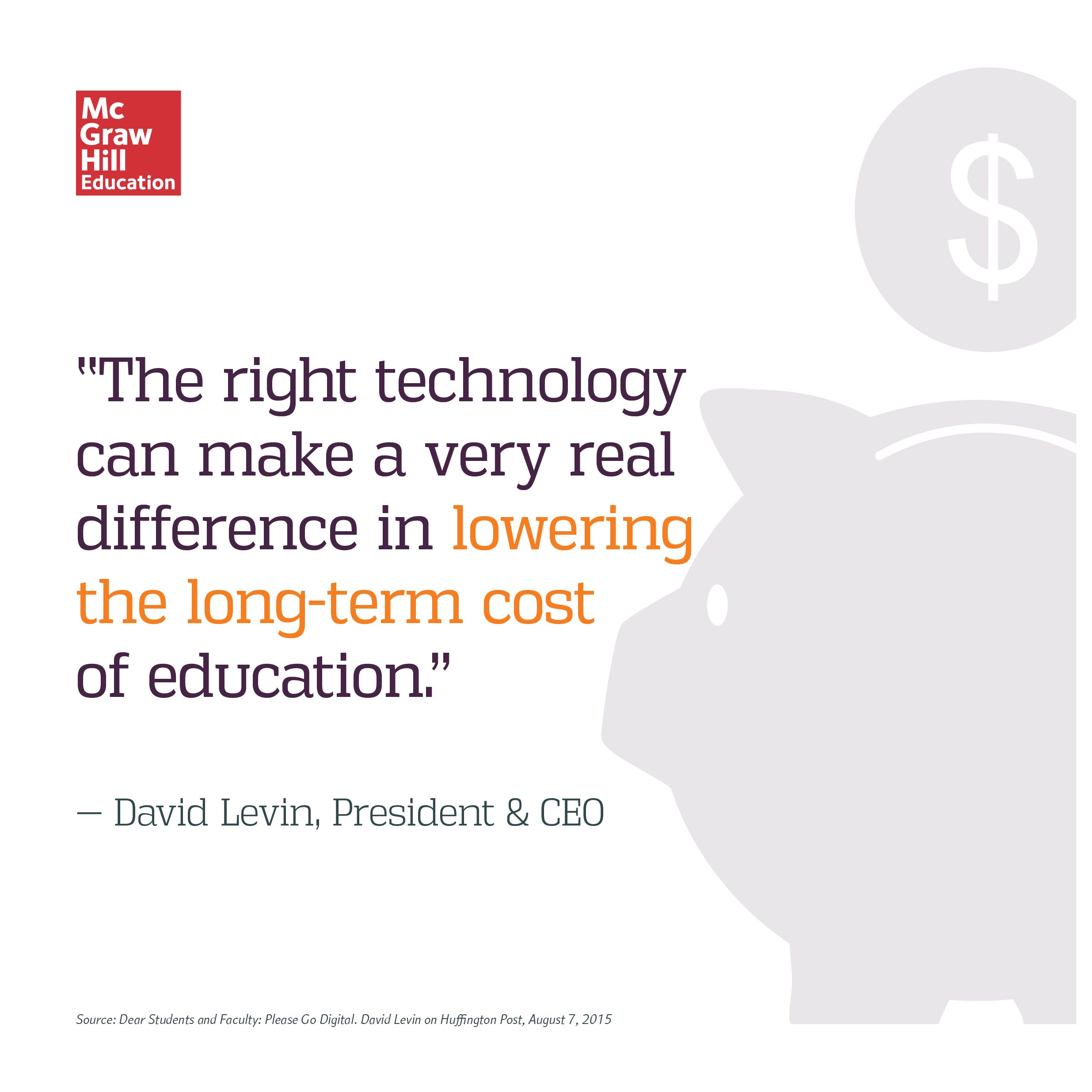Log In to My PreK-12 Platform
Dear Students and Faculty: Please Go Digital.
David Levin notes that the use of ed-tech tools is a less costly solution to the high cost of college textbooks

Ed-tech materials and tools built on learning science can help alleviate the high cost of traditional college textbooks.
This article was originally published on August 7, 2015 for Huffington Post.
The full article can be accessed here.

Textbooks are expensive. There, I said it.
The high price of print textbooks is something that students and parents have been bemoaning increasingly over the past decade, and understandably so. Enrolling in college requires a significant financial investment from students and their families, and I understand the frustration they feel when, after signing up for years of loans, they see a charge for an expensive textbook appear on their credit card. The icing on a pricey cake.
This - debate around the price of textbooks - and I hesitate to call it a debate, as it only has one side - continues this back-to-school season with a fresh round of criticism over $300 textbooks weighing down backpacks across the U.S. And while I'm tempted to offer a defense of these prices citing the costs involved, I won't. It's really yesterday's conversation, because we now have a better answer: replacing print textbooks with learning technology that's not only cheaper but - more importantly - way more effective.
The problem with print - and the digital opportunity
Print has been an effective way of sharing information since the time of Gutenberg, but it simply hasn't kept pace with the opportunities and demands of teaching and learning today. Of course, merely moving content from the print world to the digital ecosystem won't make a difference on its own. But by combining digital content with software that harnesses the science of learning - essentially, how the mind masters new concepts - we can work with faculty to create experiences that make learning more effective and efficient. These types of technologies go far beyond what's offered in an e-book, making learning entirely richer and more personalized. While it seems like this package would come at great expense, it's actually available today for roughly half the price of print.
The value proposition of digital learning
Digital is not without its own costs. Devices and software require investment; so does bandwidth, IT support and training. "Uptime" isn't a concern when an instructor adopts a textbook. But even with these expenses, the right technology can make a very real difference in lowering the long-term cost of education. Studies have shown that students using technologies designed to personalize the learning experience get better grades and have greater success completing their courses. And for the 50% of two-year college students and 20% of four-year college students taking remedial courses, these technologies can help them catch up with their peers and get back on track to an on-time degree. When you factor in the cost of tuition and increased earning potential of college graduates, it becomes clear that these outcomes can change lives.
To put the value in real terms, consider a biology textbook of ours that costs around $190 at the college bookstore. We now offer a better option--a digital, personalized version for $85. The digital version is more than just an e-book: it focuses students' attention on the concepts they need to learn most and away from what they've already learned. It's been shown to help students get a better grade. Stacking these options side by side, it becomes clear that digital is simply a better value than print. We feel so strongly about this point that we now offer college students who buy our digital products the option to add a loose-leaf print version for what's essentially a processing fee--only $15 for most college courses.

Better learning, better results
Technology on its own can't solve all of our education problems. Great instructors will always be the center of the learning experience. They play the biggest role in shaping student success. But we must recognize that there are significant financial implications for students who struggle in college and fail to graduate. While I'm happy that learning technology can help save students money at the cash register, I'm far prouder of its ability to help improve student performance and results.
Yes, we will likely sell print as long as our customers ask us to, and for as long as we do, we'll likely be criticized for the prices. But I've been able to make my peace with that, because I know that we also offer a better value proposition with products that utilize the science of learning - and students are taking us up on it.
In a world where results matter, it's clear that the future of instructional resources is digital and we are pricing these resources at a much lower level than print. Even if print prices dropped, they are such a small part of the cost of education that it wouldn't even dent the problems we face in higher education today. What are the best tools for achieving student success? How do we best get them into the hands of students? How do we support instructors and educators? How do we raise graduation rates? How do we reduce the costs of college? These are the questions that need to be answered, and from my perspective, the conversation can't happen quickly enough.
-David Levin
President and CEO of McGraw-Hill